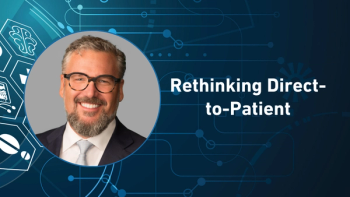
- Pharmaceutical Commerce - January/February 2017
HHS issues a final rule on 340b policy details
Meanwhile, Congress strategizes repealing Obamacare, which expanded the 340b program
There’s a little bit of a rearranging-the-deck-chairs-on-the-Titanic feeling about the Jan. 5 rulemaking by HHS, given that the underpinnings of the existing 340b program are tied to the Affordable Care Act, which has been a favorite target for repeal for the past and now current Congress. Nevertheless, aspects of the rule,
The original aims of the 340b program, put into effect with a 1992 public health law, were to enable certain classes of healthcare facilities to “earn” funds by getting a significant discount on drugs purchased and dispensed by them for outpatient treatment. These facilities were originally limited to “disproportionate share” hospitals (which treat a disproportionately higher share of indigent patients). Subsequent rulemaking, including the Affordable Care Act, expanded the types of facilities eligible, and that the dispensing could be handled by contract pharmacies rather than the facility’s own pharmacy; there has been other regulatory language about the types of drugs that qualify. Now, the 340b program represents some $5-7 billion in rebated funds, out of an estimated total of $15-17 billion worth of prescribed drugs eligible for the discounts; it has been growing at double-digit rates for several years. Some 40-50% of all hospitals now quality as 340b-eligible.
The Jan. 5 rulemaking addresses two past areas of contention: some mechanical details of how the 340b “ceiling price” is to be calculated (including provisions for calculating that price for a newly launched drug that doesn’t yet have a track record of commercial pricing); and the “penny pricing policy” of charging 1 cent for a drug whose ceiling price is effectively zero or negative once the discount is calculated. Another provision is the terms under which a “civil monetary penalty” would be charged for when a pharma company purposely overcharges a healthcare facility in the 340b program.
Amazingly, while both these provisions generated significant critical commentary in the past, neither addresses the bigger-picture issues: that 340b some facilities are playing fast and loose with the eligibility rules (effectively, turning the program into a revenue center for themselves); and that, in some cases, facilities have a perverse incentive to use higher-priced drugs (especially in oncology) because the higher prices generate more rebates. (Another effect of this is that it puts 340b facilities at an advantage compared to community oncologists, who generally can’t get the same level of rebates. It is for this reason that the Community Oncology Alliance has been critical of the administration of the 340b program.) In all this, it’s worth noting that the pharma industry is essentially funding the 340b program through its rebates, which (at least from a Beltway perspective) is a rather artful way to fund a public health initiative. Participation in 340b is voluntary; but the requirement that participation in other (Medicaid) programs—which can affect millions of prescriptions—is contingent on 340b participation makes that voluntarism moot.
A steady stream of reports by the Office of Inspector General of HHS; the Government Accountability Office, Congressional hearings, and policy studies by the Community Oncology Alliance and other private entities has been generated over the years because of the 340b program; the new final rule is only one more piece of the puzzle. The new Congress’ oft-stated desire to repeal the Affordable Care Act, and revamp Medicaid programs guarantees that more rules, studies and controversies will be forthcoming.
Articles in this issue
almost 9 years ago
Hey, what’s this supply chain stuff?almost 9 years ago
Healthcare confronts opioid addictionalmost 9 years ago
FDA issues guidances on biosimilarity naming, interchangeabilityalmost 9 years ago
US Drug Pricing Debate: Finding some dearly needed real solutionsalmost 9 years ago
A conversation with Mark Sell, MD Logisticsalmost 9 years ago
Getting to prescribers via the diagnostics routealmost 9 years ago
Pharmaceutical Cargo Security Coalition (PCSC) sets expanded agendaalmost 9 years ago
Commercial IT moves to the cloudalmost 9 years ago
Consultant pharmacists and long-term care 101Newsletter
Stay ahead in the life sciences industry with Pharmaceutical Commerce, the latest news, trends, and strategies in drug distribution, commercialization, and market access.




